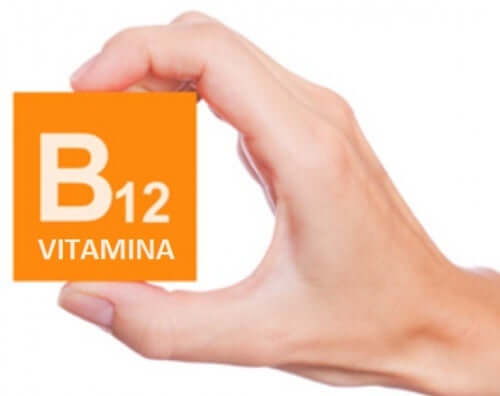What's Methylmalonic Acidemia?

Methylmalonic acidemia is a defect from birth that disrupts the metabolism of vitamin B12. The body can’t break down certain proteins and fats, thus resulting in a blood methylmalonic acid buildup.
The disease is usually diagnosed in the first year of life. Between 1 in 25,000 and1 in 48,000 babies are born with this condition. The symptoms are evident during infancy and vary from person to person.
Causes of methylmalonic acidemia

The cause of vitamin B12 responsive methylmalonic acidemia is a defect in adenosylcobalamin synthesis caused by mutations in the MMAA (4q31.1-2), MMAB (12q24.1), and MMADHC (2q23.2) genes.
Another type is caused by a complete or partial deficiency in the activity of the enzyme methylmalonyl CoA mutase. But, in this case, the mutations are in the MUT gene (6p21).
However, all methylmalonic acidemias are transmitted following an autosomal recessive pattern of inheritance.
Symptoms
Signs and symptoms of methylmalonic acidemia may include vomiting, dehydration, hypotonia, developmental delay, fatigue, and also hepatomegaly. Moreover, long-term complications may include:
- Feeding problems
- Intellectual disabilities
- Chronic kidney disease
- Pancreatitis or inflammation of the pancreas
If the affected persons aren’t treated, then they can go into a coma or even die. Those affected with isolated methylmalonic acidemia may suffer from the following symptoms, depending on the form of the disease:
Childhood
This is of the methylmalonyl CoA mutase subtype, and is the most common form of isolated methylmalonic acidemia. It manifests during childhood. The children are normal at birth, but they quickly develop symptoms such as lethargy, vomiting, and dehydration.
Then, liver enlargement, hypotonia, and encephalopathy become evident. Blood tests measure the following parameters:
- Ketosis and ketonuria
- Blood ammonia
- Severe metabolic acidosis
- Increased blood glycine levels
You should also read: Everything You Need to Know About Vitamin B12
B12 responsive
This type is responsive to vitamin B12 and shows itself in the first months or years of life. Affected children may have feeding problems such as anorexia, vomiting, hypotonia, and developmental delay.
In some cases, they may vomit after eating proteins. Children affected by this form of methylmalonic acidemia are at risk of metabolic decompensation. That’s why it’s very important to diagnose it and start treatment as soon as possible.
Usually, doctors can’t tell if a person is suffering from this metabolic disorder until the first occurrence of vomiting, dehydration, lethargy, or coma occurs.
Adult-onset
Affected individuals are considered stable, but may be prone to acute metabolic decompensation. The cause of this type of methylmalonic acidemia hasn’t been fully established.
Treatment of methylmalonic acidemia

Patients should start treatment immediately after the diagnosis. The sooner the patient begins the treatment, the better the patient will evolve.
Currently, diet is the mainstay of the treatment for methylmalonic acidemia. The goal of dietary treatment is to prevent the accumulation of substrates and metabolites associated with toxic levels.
The recommended treatments for children with methylmalonic acidemia are:
- L-carnitine. This substance, besides being safe and natural, helps the body produce energy and remove waste.
- Oral antibiotics. These drugs can help reduce the amount of methylmalonic acid in the intestines.
- Vitamin B12 injections. Over 90% of cases of CblA type respond to this treatment. In addition, it helps 40% of children with CblB type.
If you have symptoms of a metabolic crisis, you should go to hospital. Hospital treatment includes intravenous sodium bicarbonate to reduce blood acidity.
Furthermore, doctors usually administer intravenous glucose to prevent the breakdown of protein and fat stored in the body.
You may also enjoy the following article: How to Know if You Have a Vitamin B12 deficiency
Prevention
Medical professionals recommend a diet low in amino acids with limited amounts of protein. The diet should mainly contain carbohydrates such as cereals, fruits, pasta, and vegetables.
People who suffer from this condition should avoid contact with people with contagious diseases such as colds or the flu in order to avoid complications.
All cited sources were thoroughly reviewed by our team to ensure their quality, reliability, currency, and validity. The bibliography of this article was considered reliable and of academic or scientific accuracy.
-
López, E. A. R., García, E. E., Morales, J. M. G., Barrera A., L. A., Peña, O. Y. E., & Cuéllar, Y. M. (2018). ACIDEMIA METILMALÓNICA. In Errores innatos en el metabolismo. https://doi.org/10.2307/j.ctv86dgfs.12
-
Varo, I. J., Delgado, M. B., Fuentes, E. D., Pecellin, C. D., Meneses, A. G., Moreno, A. S., & Moreno, E. V. (2015). Combinación de acidemia metilmalónica y homocisteinuria; a propósito de un caso. Nutricion Hospitalaria. https://doi.org/10.3305/nh.2015.31.4.8544
-
Guevara-Campos, J., González-de Guevara, L., & Medina-Atopo, M. (2003). Aciduria metilmalónica asociada a convulsiones mioclónicas, retraso psicomotor e hipsarritmia. Revista de Neurologia.
This text is provided for informational purposes only and does not replace consultation with a professional. If in doubt, consult your specialist.








